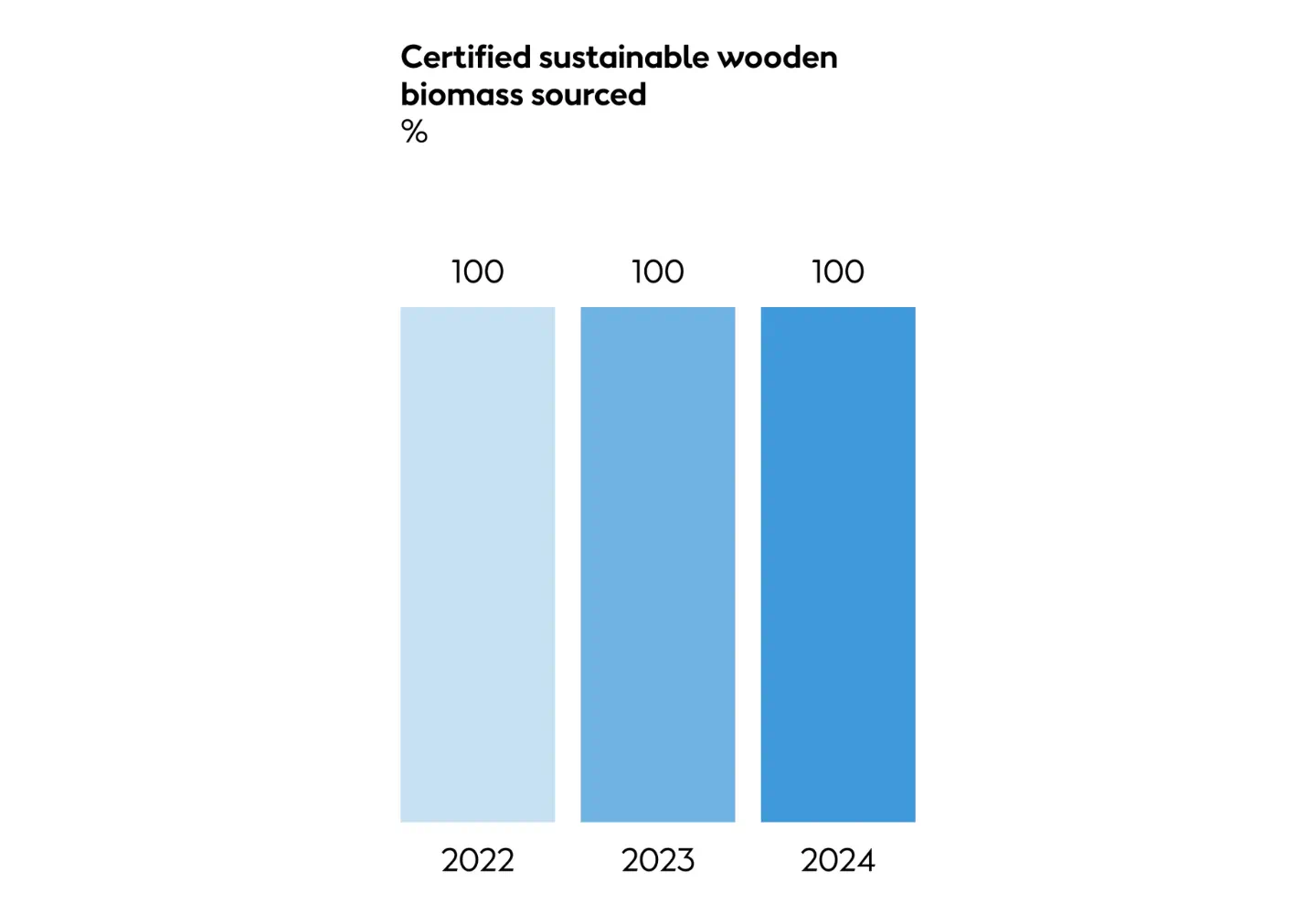| What are we doing? |
| How are we doing |
| Latest updates |
| Key information |
What role does biomass play in the Danish energy system?
Biomass plays a significant role in the Danish energy system. Due to the widespread use of district heating, biomass can be used with very high efficiency yields of up to 90 %, providing an alternative energy source when the sun isn’t shining, or the wind isn’t blowing.Capturing and utilising the green biogenic carbon released from biomass also has significant potential in the development of Power-to-X (P2X) projects for the production of green fuels. In general, however, we must be aware of the scale when using certified sustainable biomass.
We expect that our use of biomass for power generation will decline as other renewable energy sources increase, but that it will continue to play a role in the Danish energy system. This is because it can function both as a storable energy solution supplementing sun and wind, and in P2X.
We believe our approach works because of the specific design of the Danish energy system, and because we set extremely high requirements for where, how, and what type of biomass we source. We recognise that biomass, while renewable, is a resource we can’t abuse. Otherwise, the climate benefits are lost.
